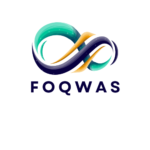
Introduction:
In today’s fast-paced digital world, the role of a full stack developer has become increasingly crucial. With the demand for versatile professionals who can handle both front-end and back-end development, mastering the art of full stack development opens doors to a world of opportunities. This article explores the multifaceted domain of full stack development, providing insights, strategies, and resources to empower aspiring and seasoned developers alike.
Outline:
- Defining Full Stack Development
- Key Components and Technologies
II. Front-End Development: Building User Interfaces
- HTML, CSS, and JavaScript Essentials
- Front-End Frameworks and Libraries
- Responsive Design and Cross-Browser Compatibility
III. Back-End Development: Powering the Application
- Server-Side Languages and Frameworks
- Databases and Data Management
- APIs and Integrations
IV. Tools and Technologies for Full Stack Development
- Version Control Systems
- Integrated Development Environments (IDEs)
- DevOps Practices and Continuous Integration
V. Mastering Full Stack Development: Best Practices and Strategies
- Agile Methodologies and Project Management
- Collaboration and Communication Skills
- Lifelong Learning and Skill Enhancement
VI. Resources and Learning Pathways for Full Stack Developers
- Online Courses and Tutorials
- Books and Publications
- Community Engagement and Networking
VII. Challenges and Opportunities in Full Stack Development
- Keeping Up with Rapid Technological Advancements
- Balancing Depth and Breadth of Skills
- Leveraging Emerging Technologies
VIII. Conclusion
- Embracing the Journey of Full Stack Development
- Continuing the Quest for Mastery
Understanding Full Stack Development:
Full stack development encompasses both front-end and back-end aspects of web development. A full stack developer is proficient in building both client-side and server-side software components, enabling them to create fully functional web applications from start to finish. This section delves into the fundamental components and technologies that constitute full stack development.
Front-End Development: Building User Interfaces
Front-end development focuses on creating user interfaces and experiences that engage and delight users. Essential technologies include HTML for structuring web content, CSS for styling and layout, and JavaScript for interactivity. Front-end frameworks and libraries such as React, Angular, and Vue.js provide developers with tools to streamline development and enhance user experiences across various devices and platforms.
Back-End Development: Powering the Application
The back-end of a web application comprises the server-side components responsible for processing requests, managing data, and delivering responses to the client-side. Back-end developers work with server-side languages such as Python, Ruby, Node.js, or Java, along with frameworks like Django, Ruby on Rails, Express.js, or Spring Boot. Databases play a crucial role in back-end development, with options ranging from relational databases like MySQL and PostgreSQL to NoSQL databases like MongoDB and Redis. Additionally, APIs (Application Programming Interfaces) facilitate communication and integration between different software systems, enabling seamless interactions within complex web applications.
Tools and Technologies for Full Stack Development
Effective full stack development relies on a robust set of tools and technologies that streamline the development process, enhance productivity, and ensure code quality. Version control systems like Git enable developers to collaborate efficiently and track changes to their codebase. Integrated Development Environments (IDEs) such as Visual Studio Code, Atom, or JetBrains IntelliJ IDEA provide powerful features for writing, debugging, and testing code. DevOps practices emphasize automation, continuous integration, and continuous delivery, fostering a culture of collaboration and efficiency within development teams.
Mastering Full Stack Development: Best Practices and Strategies
Becoming proficient in full stack development goes beyond technical skills; it requires embracing best practices, adopting effective strategies, and cultivating essential soft skills. Agile methodologies promote iterative development, adaptive planning, and continuous improvement, enabling teams to respond to change and deliver value to stakeholders efficiently. Collaboration and communication skills are essential for working effectively within cross-functional teams and fostering a culture of collaboration and innovation. Lifelong learning and skill enhancement are inherent to the field of full stack development, with new technologies and frameworks continually emerging, necessitating a commitment to ongoing growth and development.
Resources and Learning Pathways for Full Stack Developers
Numerous resources and learning pathways are available to support aspiring and seasoned full stack developers in their journey of skill acquisition and mastery. Online courses and tutorials offer structured learning experiences across a wide range of topics, catering to different learning styles and skill levels. Books and publications provide in-depth insights and knowledge on specific technologies and best practices. Community engagement and networking opportunities, whether through local meetups, online forums, or social media channels, enable developers to connect with peers, share knowledge, and stay updated on industry trends and advancements.
Challenges and Opportunities in Full Stack Development
While full stack development offers exciting opportunities for innovation and creativity, it also presents challenges that developers must navigate effectively. Keeping up with rapid technological advancements requires a commitment to continuous learning and adaptation, as new frameworks, tools, and paradigms emerge at a rapid pace. Balancing the depth and breadth of skills can be challenging, as developers seek to maintain proficiency across multiple technologies while also cultivating expertise in specific areas of interest. Leveraging emerging technologies such as artificial intelligence, blockchain, and the Internet of Things (IoT) presents opportunities for developers to explore new frontiers and contribute to cutting-edge projects and initiatives.
Conclusion:
Mastering the art of full stack development is a journey of continuous learning, growth, and exploration. By understanding the fundamental components and technologies, adopting best practices and strategies, and leveraging resources and learning pathways, developers can embark on this journey with confidence and enthusiasm. Embracing the challenges and opportunities inherent in full stack development, developers can contribute to building innovative, impactful, and transformative digital solutions that shape the future of technology and society.
This comprehensive guide aims to provide aspiring and seasoned full stack developers with insights, strategies, and resources to navigate the dynamic and ever-evolving landscape of full stack development. Whether you’re embarking on your journey as a full stack developer or seeking to enhance your skills and expertise, may this article serve as a valuable companion and guide on your quest for mastery in the exciting world of full stack development.
